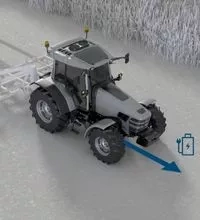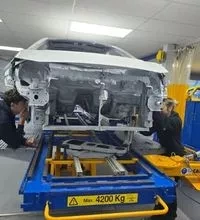The trouble with emissions testing
In this article: MOT testers need to follow protocols, no matter if they think it’s unfair, keep an eye on these seven areas to make sure you’re testing correctly
MOT testers are on the front line of environmental action against polluting vehicles. A few years ago we had international emissions scandals, where manufacturers were installing so called “cheat devices” and the fallout is still with us. But that isn’t the only thing we have to contend with in the MOT bay, here are the seven areas of emission and smoke testing that technicians need to consider.
Smoking’s bad for your health
Talking to the testers I found they had little faith in the diesel smoke test and cited the fact that a number of vehicles fail merely due to a build-up of soot in the exhaust system, which is emitted during the diesel test. The testers told me that revving the engine would never be a substitute for a proper dynamometer test of the engine under load. I can’t say I disagree with them either. However, such a test isn’t coming any time soon.
Removing catalytic converters and particulate filters
Some people in MOT garages don’t understand that this makes the vehicle illegal and don’t consider that they are making the vehicle unsafe to drive. Excessively polluting vehicles do kill people, it’s just that it’s a slower process than running them over. Expect a ban from testing if you offer such services.
Testing to plate values
Some garages still don’t test to plate values where appropriate. Plate values have been with us since May 2018 so it’s hard to believe the tester who claims he didn’t know. The plate will be either under the bonnet area, or on the VIN plate or near it so there’s no excuse.
Testing diesels at low temperatures
Engine oil should be at 80°C minimum, or, if the engine cannot achieve this temperature then 60°C is acceptable. Your smoke meter will let you test once it gets to 60°C as it doesn’t know if the vehicle under test is incapable of getting hotter. Its your engineering skill and judgement that decides if the engine can make 80°C.
The DVSA sees all
If you’re passing every diesel that comes in because your doing it wrong then your Test Quality Information (TQI) will have an abnormally low failure rate for emissions. The operative words here are “doing it wrong”. If you’re in a main agent, you may only ever see fairly new, well maintained vehicles, so you could expect a low rate. But if you’re in an average independent garage, maybe in a poor area you probably going to fail more. DVSA can look at your TQI and compare it to the other testers in your garage, or the garage down the road with a similar profile. So make sure you’re up to speed with how tests are performed.
Keep printouts up to date
One of the few areas of the test that DVSA can look at historically is your print outs, and you’re required to keep them for three months. Make simple handwritten comments such as “No dipstick” if you can’t get a temperature or other auditory comment relating to the test, having the correct paperwork will make your life easier in the long run.
Economy can lead to failure
Most technicians at some stage have tested a diesel vehicle that a customer bought for economy and nurses it everywhere. Not surprisingly it only gets a boot full during the MOT and coughs out the soot contained within its exhaust system. Many testers won’t rev such a vehicle hard during the test, and may not rev any diesels very high. This was the case of my new garage who asked about the plate value.
It was a straight forward failure for excessive smoke. The testing garage felt that somehow, they were responsible for what seemed to them to be an unfair fail. I certainly don’t condone a misleading trade statement, but the vehicle’s service history, coupled with the smoke should have led the garage to suggest servicing and maybe other engine repairs.




